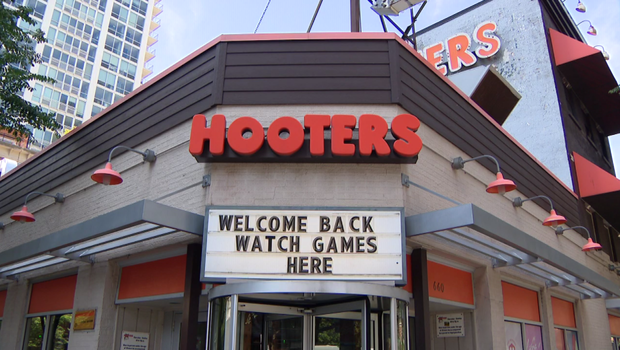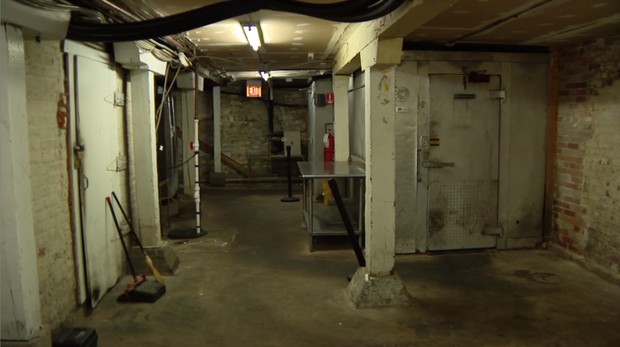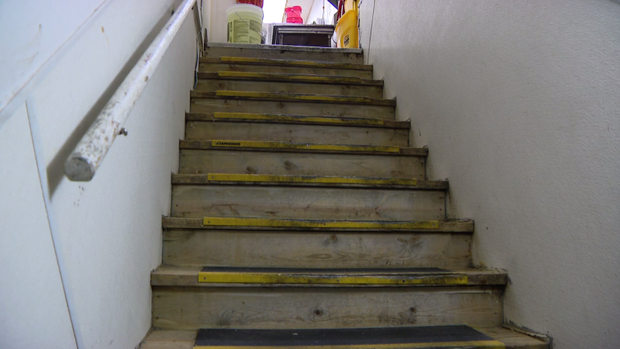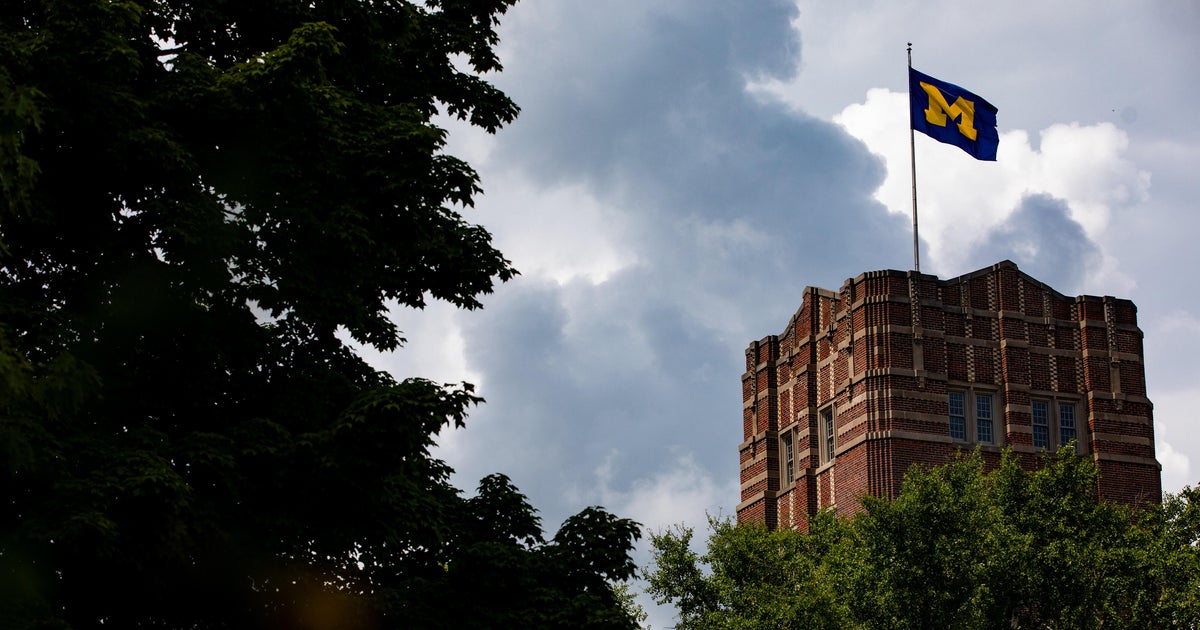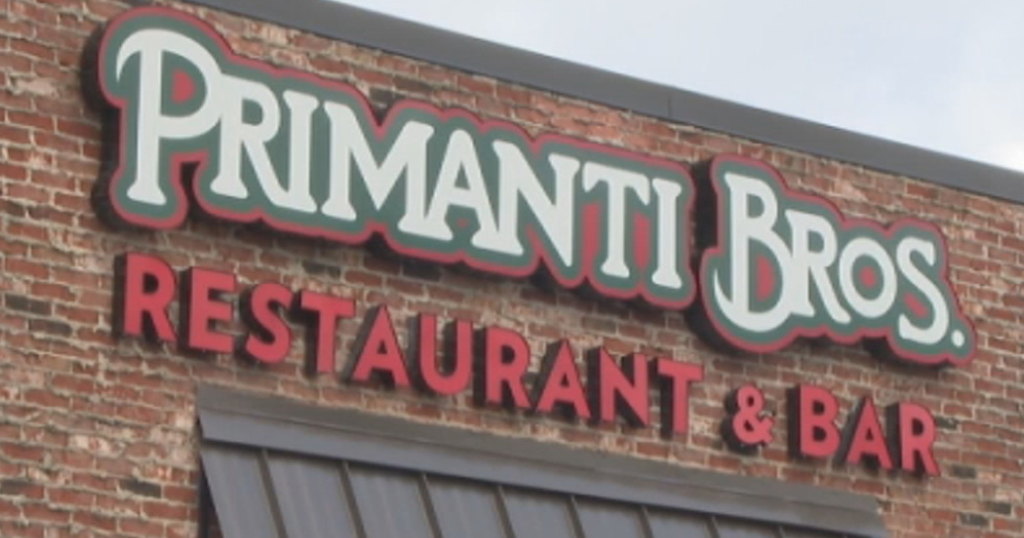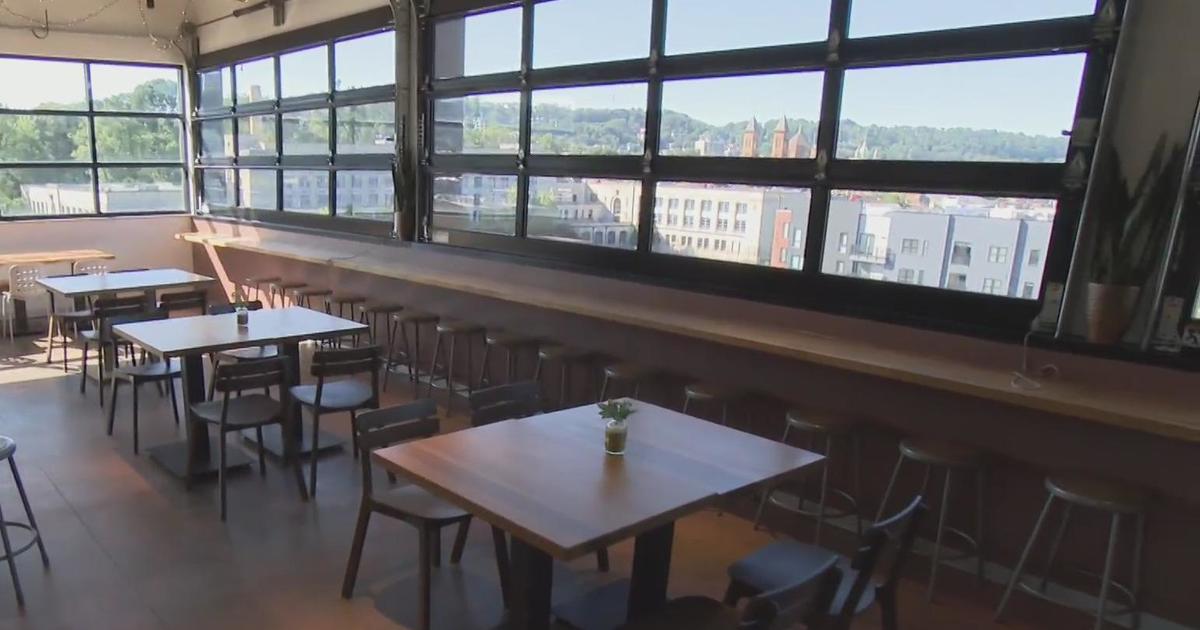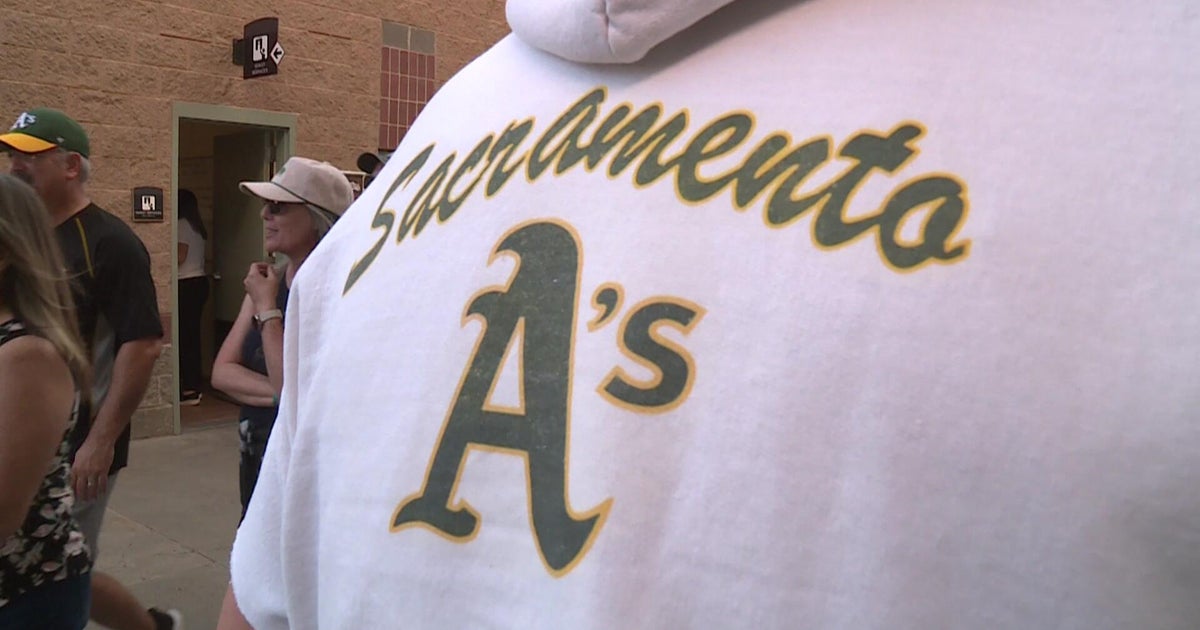Chicago Hauntings: More than just wings and tight outfits at the haunted Chicago Hooters
CHICAGO (CBS) -- The history section of the website for the original Hooters restaurant chain has its share of characteristic cheekiness, as it describes the first location in Clearwater, Florida, founded by six men with no restaurant experience in 1983:
"What to name the place. Simple – what else brings a gleam to men's eyes everywhere besides beer and chicken wings and an occasional winning football season? Hence, the name: Hooters. It is supposed they were into owls. Strange group."
Owls, eh?
The business model at Hooters, of course, actually involves a sports bar with voluptuous women in tight clothing serving chicken wings, sandwiches, and seafood. The concept was referred to as a "breastaurant" in straight-faced formal news copy, and did it ever take off.
A decade after its founding, Hooters found its way to Chicago—settling at 660 N. Wells St. in River North in 1993.
On its website, Hooters notes that the Wells Street location is and always has been the only one in the downtown area—which has made it a longstanding hit with tourists and locals alike. But it's known for something else too.
Ghosts.
According to Tony Szabelski of Chicago Hauntings Tours, paranormal activity has been reported in the Hooters building for about two decades—and has been written about in several different books. But for many years, the reasons for a Hooters, of all places, being haunted was a mystery.
Experts think they have since figured it out.
About a mile and a half to the north, the southern end of Lincoln Park near the Chicago History Museum and the Lincoln Park Zoo was the Chicago city cemetery back in the 1840s and 1850s—the Couch mausoleum, the one remaining reminder of the park's days as a cemetery—has its own hauntings associated with it. During that era, grave robbing was huge—so-called resurrectionists would dig up freshly buried corpses and sell them to medical colleges, Szabelski explained.
The medical colleges needed the cadavers for training med students—and no one was donating their body to science back then, Szabelski said. Instead, the resurrectionists would show up to the back door of the medical college and hand off the fresh bodies—no questions asked.
Does this sound made up? It's not. Even Smithsonian Magazine has covered resurrectionists and the shady practices of 19th-century medical colleges—in a 2018 article, writer Antero Pietila wrote specifically about grave robbers in Baltimore:
"The plunderers began by shoveling at the head of a freshly buried coffin, breaking the lid, placing a hook around the deceased's neck or armpit and, with the help of a rope, easing the body out of the grave. For shipment elsewhere, the corpses were folded into barrels filled with whiskey—to mask the odor. At the destination, a medical school took the remains for dissection."
As Adam Selzer wrote in Mysterious Chicago, the Chicago Tribune reported in 1875 that resurrections suddenly found themselves out of luck handing off freshly exhumed bodies to medical colleges in Chicago. Under new laws, Selzer wrote, medical colleges had been granted the first right to bodies headed for the Potter's Field—which Selzer identifies as having been in Jefferson Park. He is likely referring to the Cook County Cemetery at Dunning.
But the resurrectionists went on plying their gruesome trade, as there was still a market for stolen cadavers at medical colleges in Michigan, Indiana, Wisconsin, and other nearby states. Selzer wrote that Ann Arbor, Michigan, and Iowa City, Iowa were particularly major markets for cadavers from Chicago.
The site of the present-day Hooters building comes into play as a stop between the cemeteries and the out-of-state destinations.
"To preserve those bodies, they brought them to a building that was here before the Hooters' existence, and they would put them—some were in this basement, some were in the alley behind the building—in pickle barrels, and the pickle barrels were labeled 'poultry,' until they could distribute them to the medical colleges," Szabelski said as he stood in the basement of the Haunted Hooters recently.
There are some specific news stories related to this. Selzer wrote that in February 1875, the Tribune reported body snatchers were digging up graves, opening coffins, and dragging out the corpses with hooks—and then routing the bodies through an alley behind a charnel house at 167 N. Wells St.—which, before the street numbering system changed in 1909, would have been near Wells and Erie streets.
A suspected grave robber was apprehended in connection with this scheme, but jumped bail, Selzer wrote. Meanwhile, at least five barrels full of bodies were found in the area—two of them women about whom Selzer quoted a rather sensational description by the Tribune of the era:
"Stockings covered the feet and a portion of the shapely limbs, but the rest of her person was entirely nude. The head was turned to one side in a posture that would have been natural to animate modesty, and which, in the poor maltreated corpse, carried with it a pitying suggestion of womanly purity. Although the changes of death had somewhat altered the contour of her body, the beholder could not but be struck with the shapeliness of her limbs and the general beauty of her person; but her parted lips and staring eye-balls made a gorgon horror of the face that in life had been comely and attractive."
A man with a long beard and a boy who had both died of consumption, and an elderly man, were also among those whose bodies were found, Selzer wrote.
But these stories about grave snatchers, ethically-challenged medical colleges, bodies being hauled across state lines in pickle barrels, and lurid descriptions of deceased people whose once-comely faces had been transformed into "gorgon horrors?" They're not the only basis for ghosts in the Haunted Hooters.
A manager at the River North Hooters told Szabelski that a few victims of the Eastland Disaster were also brought to the basement of what is now the Hooters building. On July 24, 1915, the steamship Eastland was parked in the Chicago River with a crowd of people onboard when it tipped over—trapping hundreds of people under the water line. It is not clear what happened, but when the vessel tipped, 844 people lost their lives – including 22 entire families.
There are numerous sites associated with the Eastland Disaster that are said to be haunted—including the Reid, Murdoch & Co. Building with its grand clock tower at 325 N. LaSalle St., and the Second Regiment Armory at 110 N. Carpenter St., which later became Oprah Winfrey's Harpo Studios and has since been demolished for the corporate headquarters for McDonald's. Both of these structures were used as makeshift morgues, and legend has it that the present-day Hooters building was too.
The uses of the property at 660 N. Wells St. over the years before Hooters are not all documented online. Szabelski said a brothel was reputed once to have operated at the present-day Hooters site, but nothing specific about a brothel at 660 N. Wells St. could be found in a web search. However, River North was home to an infamous red-light district as late as the 70s—with a brothel called Suzette's that boasted a client list of over 900 operating about a block to the north on Wells Street as of 1978.
The area around Clark and Hubbard streets—a short walk to the south and east of the Hooters building—was still known for prostitution as recently as a decade ago.
Meanwhile, archive Tribune reports note that from 1981 until 1987, the building at 660 N. Wells St. housed an Italian restaurant called Sogni Dorati—or "Golden Dreams"—which owner Silvio Pinto decorated like "a small doge`s Venetian palace, with busts of Roman emperors, prints of Italian architecture, and Empire-style furniture which he found himself, prowling around Near North shops and the Kane County Flea Market." The restaurant closed due to bankruptcy in November 1987, and Pinto died the following year of liver and pancreatic cancer—he was only 45, the Tribune reported.
As colorful a place as Sogni Dorati seems to have been, there's no mention of ghosts in any of the articles about it. But at the Hooters that's been at 660 N. Wells St. for 31 years now? Ghosts galore, visitors and staff say in numerous reports.
Stories of hauntings in the general area go back at least to the 1950s. Selzer wrote that a Tribune article in that area about old and forgotten haunted houses identified a house on Erie Street that was used by a medical college that bought bodies from resurrectionists. The article, he wrote, said neighbors would hear mysterious hoofbeats and the sound of body snatchers hauling caskets off their wagons.
In the comparatively recent years since Hooters has been in the building, Szabelski says employees have reported shadow figures—especially in the basement. A manager also told Szabelski about experiences she had going up and down the stairs between the basement and the main floor—with there being a sense that someone was either coming up or going down the stairs right behind her.
Paranormal Study reports staffers have also reported hearing voices as they go down the stairs to the basement despite no one being around—only for those voices to go silent once the staffers reach the bottom of the stairs. Some waitstaff have also reported feeling rough hands grabbing or touching them, Paranormal Study reported.
In the main Hooters space that is open to the public, people have been reporting strange problems with their electronic devices for years. Their devices power up and down again for no apparent reason, Szabelski said. Better Magazine reports people feel as if the building is somehow draining power from the devices.
Szabelski also said people have spotted apparitions in the alley behind Hooters—people dressed in 19th-cenutry garb who look like 19th-century grave robbers. Paranormal Study also reported people have reported sightings of two men and a woman in the Hooters dining area that wear "drab" 19th-cenutry period wear and have a vacant look in their eyes, and who disappear as fast as they show up.
Meanwhile, there are reports of objects falling off shelves and tables without being touched or disturbed in any way, strange orbs and streaks of light zooming around the basement in the dark, temperatures dropping in certain areas for no reason, the sound of footsteps where no one is walking, and the jukebox just randomly turning itself on, Better Magazine and Paranormal Study reported.
But are all the ghosts—at least the ones people report seeing—really going around in "drab" 19th-century attire at a festive place like Hooters? In a 2022 article for Chicago Magazine, Jackie Mantey wondered if any of the ghosts at the Haunted Hooters might instead be wearing "flattering orange booty shorts with panty hose."
"We may never know," Mantey writes. "Only hope."

